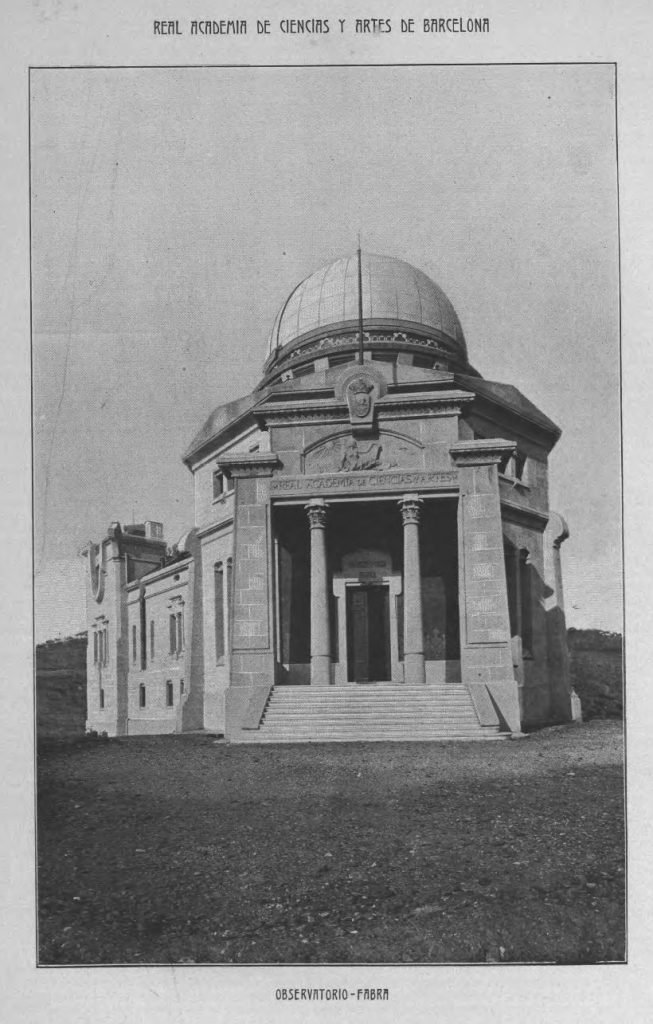Today we’ll continue our series about the Spanish Theme Park History with the second article. Every two weeks we’re publishing one of eight articles about the history of thirteen Spanish amusement and theme parks. Some of them no longer exist, but some others are still operating and receiving guests nowadays. In this series, we’ll travel in time through 168 years in theme park history, starting in 1853, to our days in 2021. Today we’ll focus on Tibidabo amusement park, one of the oldest European amusement parks that are still operating, it’s an icon of the city of Barcelona and probably the only Spanish park that Walt Disney visited.
– In the past, many of our images have been posted, featured, and shared on forums, social media platforms and websites around the web. We work hard to provide the coverage that we do, and we encourage our audience to share our content and use our images, BUT ONLY IF proper credit is given to thecoasterkings.com. Thank you! –
Tibidabo (Barcelona, 1901)
In 1886 a small chapel was built on top of the Tibidabo mountain, located to the west of the city of Barcelona at an altitude of approximately 500 meters over the sea level. The idea was to build a much larger temple dedicated to the Sacred Heart some years later, in the style of the Parisian Sacré Cœur. There were also other projects for the mountain, that was gradually becoming part of Barcelona’s culture, such as a rack railway (a similar system to the one that was built in Montserrat mountain in 1892), to improve the access to the top of the mountain.
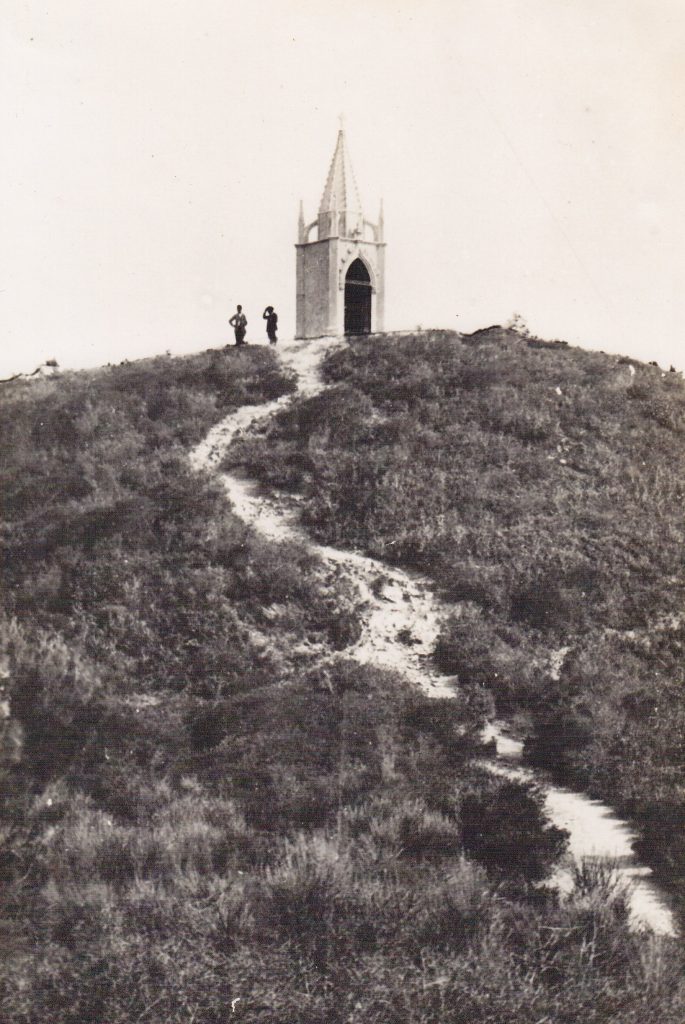
Source: https://tibidabo.salesianos.edu/historia/
But it wasn’t until Salvador Andreu, a prestigious pharmacist popularly known as Doctor Andreu, boarded the project that some ideas started turning into reality. Before working on the Tibidabo project, he had been one of the main promoters of the construction of the Eixample, the urbanization project of the area outside the former walls of Barcelona where thirty years earlier the first amusement park of Spain had been (Camps Elisis, 1853-1872). Dr. Andreu, who was very successful in his pharmaceutical business, created a very ambitious urbanization project for the Tibidabo mountain. The first part of the project consisted of purchasing the land of the lower part of the mountain.
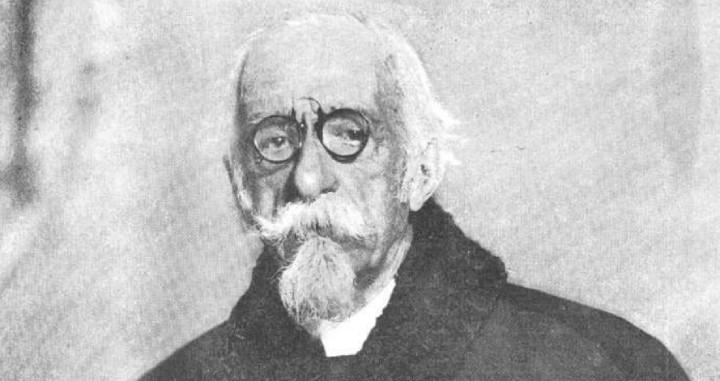
Source: https://cronicaglobal.elespanol.com/pensamiento/historias-cataluna/corazon-probeta-andreu-endogamia-montana-magica_211413_102.html
A few years later, Dr. Andreu and other important members of the Catalan bourgeoisie, founded the society El Tibidabo, and then the second phase of the mountain urbanization project began. They started the construction of accesses and communications, followed by the first mountain dwellings. One of the main access and communication methods from the city of Barcelona to the Tibidabo mountain was a funicular, which was inaugurated in 1901. This same year the first attractions of the Tibidabo amusement park were installed and consisted of a restaurant, a homing pigeon station and a shooting gallery.
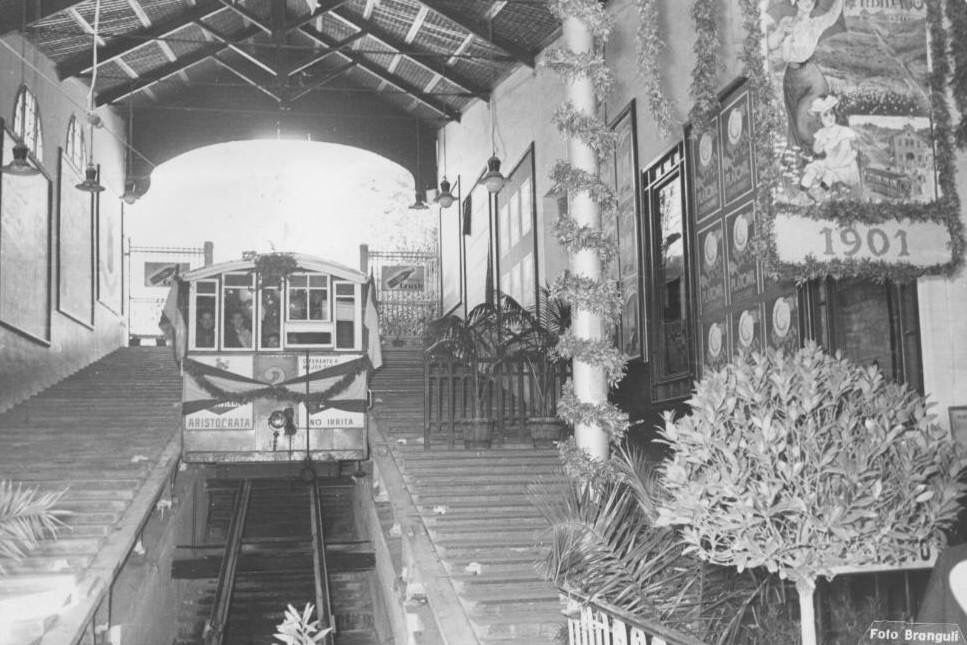
Source: https://www.pinterest.es/pin/147070744058488065/
The Tibidabo park became a very popular location over the next few years, especially because of its summer parties, dances and firework shows. Furthermore, sixteen years after the construction of the small chapel on the top of the mountain, the construction of the great temple of the Sacred Heart that today presides the mountain began on the same location. During the following years, new attractions were added to the mountain, such as an astronomical observatory called Observatori Fabra (Fabra Observatory), which is still operating nowadays, a casino, a miniature railway, a distorting mirror room, some telescopes to allow for even more views of Barcelona, an open-air cinema, and the first Carrousel of the park.
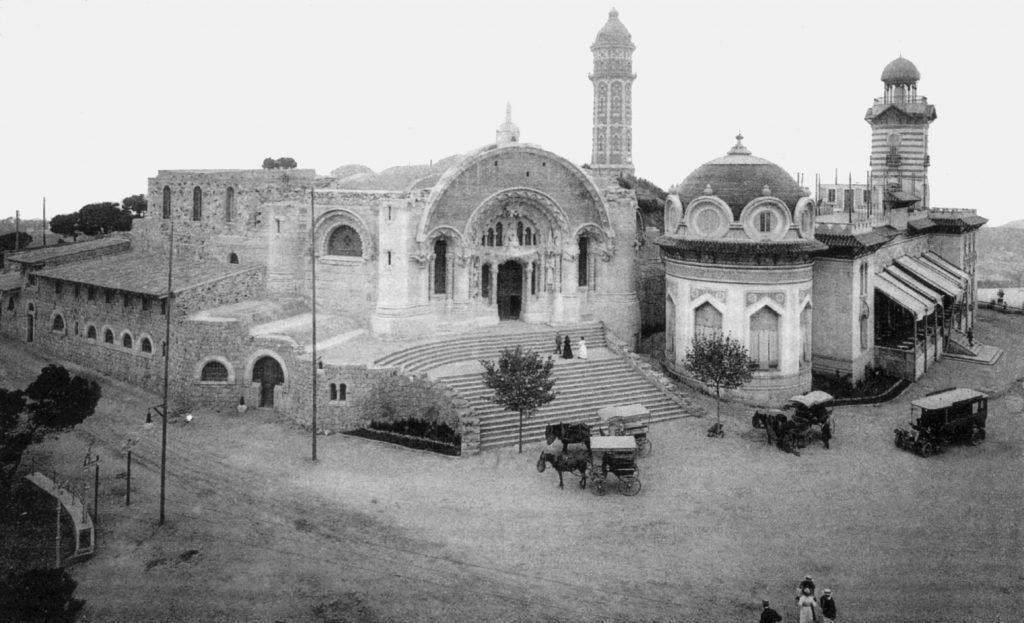
Source: https://diarieljardi.cat/la-cripta-del-tibidabo/
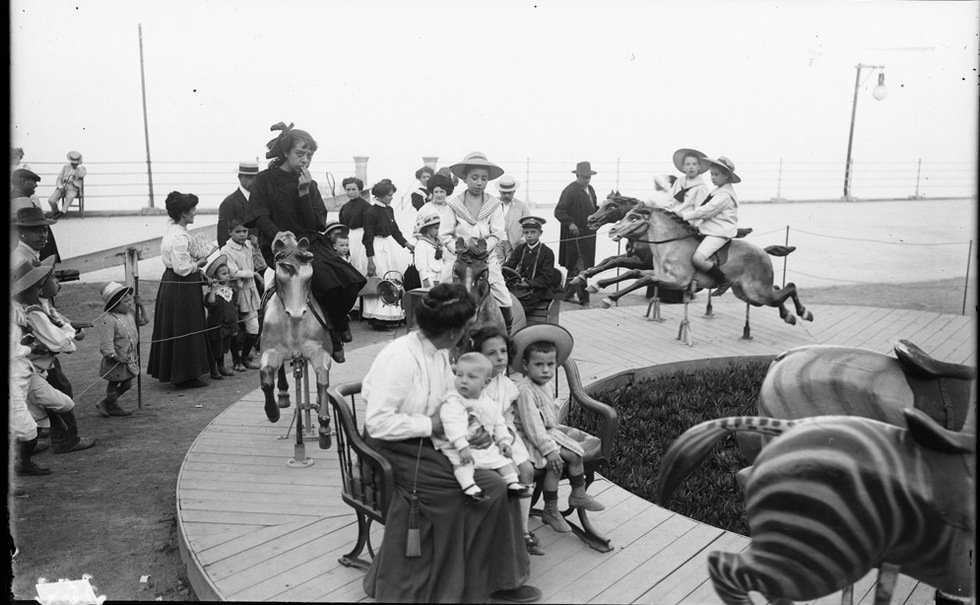
Source: https://twitter.com/Arcdelahistori/status/1109134391442198529
During this period, other amusement parks opened in Barcelona, such as Saturno Park (1911-1926), which had more modern attractions than Tibidabo. For this reason, Tibidabo updated and modernized its facilities with new next-generation attractions. Some of the most relevant attractions that were developed in this period are still operational today. The first new attraction that was built in the park was a suspension railway, directly inspired by the world’s first model (built in in Germany in 1901). The peculiarity of this type of monorail is that the cars are suspended below the rail and, in this case allowed visitors to be suspended over the spectacular views of Barcelona and the sea. This monorail was named Ferrocarril Aéreo (Overhead Railway) and consisted of outdoor and also indoor dark ride sections. For reference, a similar internationally known attraction would be Peter Pan’s Flight (Disneyland, 1955) which can be found in several Disney theme parks around the world, because one of the dark ride sections consisted of a city recreation illuminated by a large number of small lights, quite similar to the famous flight over London scene in the Disney’s classic attraction.
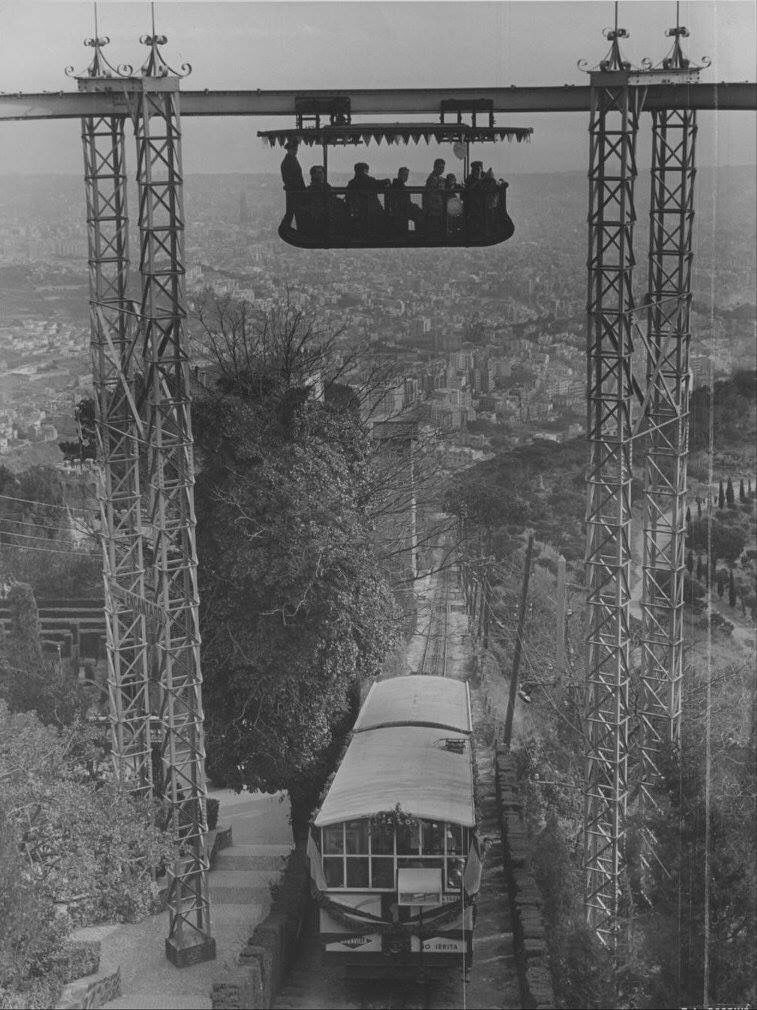
Source: https://www.pinterest.es/pin/147070744058488060/
In 1916 a new attraction was added to the park, it was a World War I walk-through experience. In some aspects, this attraction shares several similarities with the experience that can be visited nowadays at Puy Du Fou theme park in France. Five years later, a new attraction named Talaia was inaugurated, and it soon became one of the most emblematic attractions of the park and, like Ferrocarril Aéreo, is still operating today. This attraction, located at the top of the mountain (500 meters over the sea level), is 50 meters high, its structure is reminiscent of the current Fabbri Booster or Dutch KMG Speed attraction models, although its arms rotate slowly. Guests board one of the two baskets that have a capacity up to 8 people and don’t have seat belts. Thanks to its night lighting package, this attraction quickly became an emblematic symbol of Barcelona’s skyline.
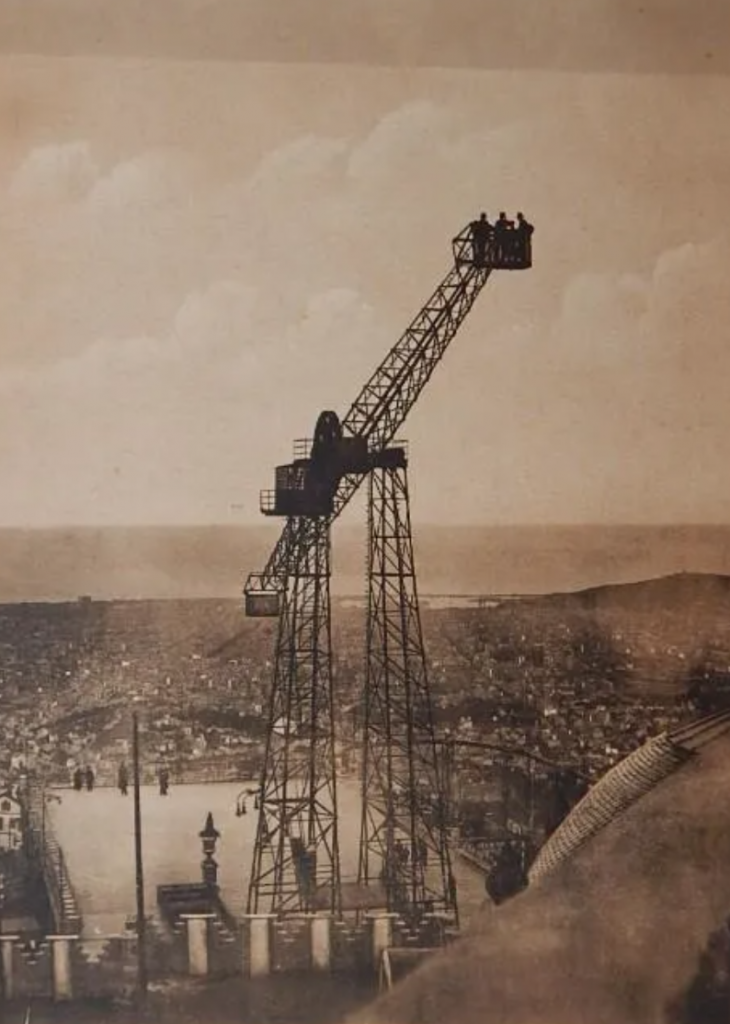
Source: https://www.todocoleccion.net/coleccionismo/2-antiguas-laminas-barcelona-tibidabo-gran-atalaya-cumbre-tibidabo-zona-inferior~x222522062
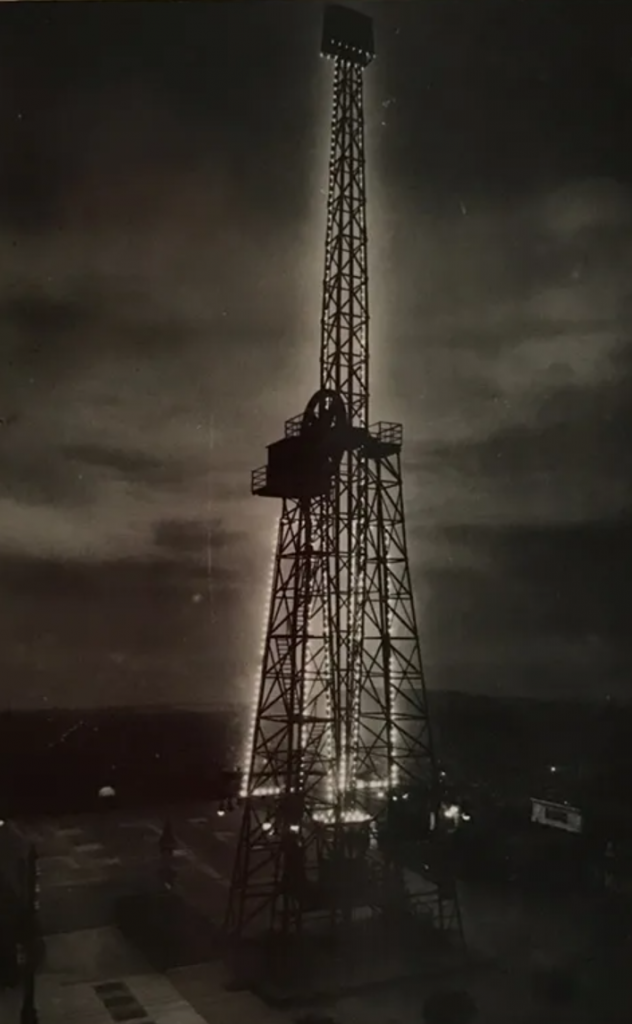
Source: https://www.todocoleccion.net/postales-cataluna/barcelona-nit-postal-no-10-tibidabo-atalaya-edic-zerkowitz-h-1930-s-c~x212209968
Seven years later, in 1928, the current park’s most symbolic attraction was built: L’Avió (The Plane). At the time it was something truly revolutionary, it consisted of a full-scale replica of a German aircraft (Rohrbach Roland model), that made the first Berlin-London flight in 1926 and was originally designed in Berlin. Very few people in Barcelona had had the opportunity to travel by plane at the time, and this new attraction created a great amount of excitement. The replica of the plane was installed on a large rotating arm and it moved thanks to its own propeller. In fact, nowadays (after some refurbishments and a color change from yellow to red) it still works the same way. As a curiosity, the plane is manually piloted by an operator from the ride’s control booth through a lever. To stop the the plane, the propeller changes its rotation direction during the second lap out of three. Since its inauguration, L’Avió has been the most emblematic attraction of Tibidabo, even becoming the park’s logo.
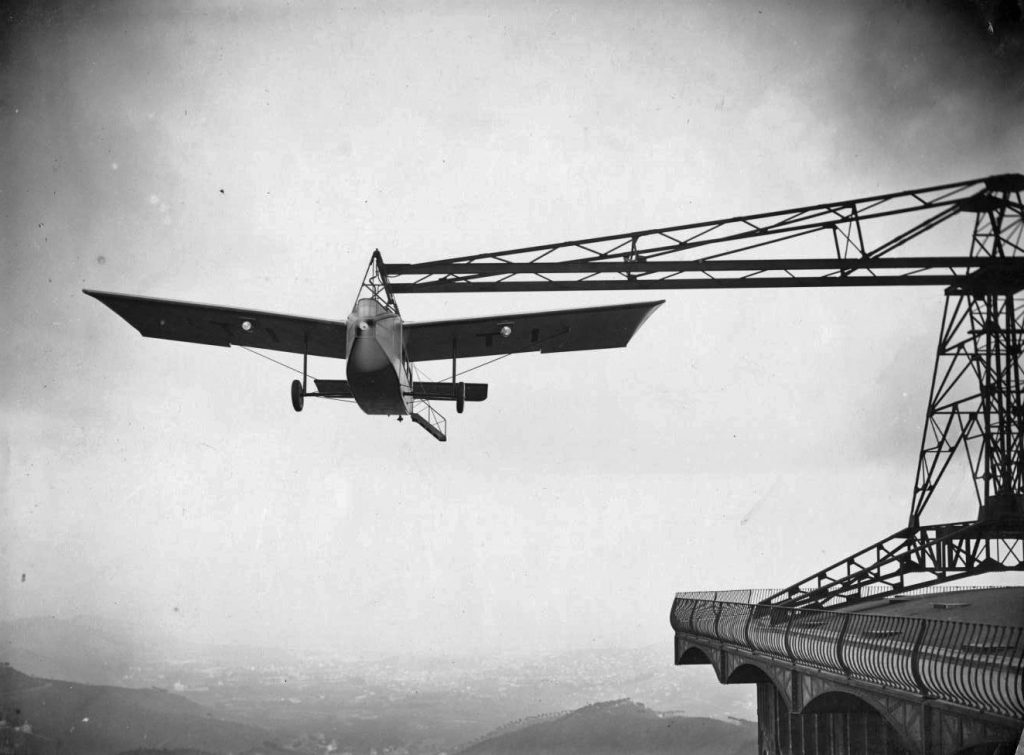
Source: https://www.metropoliabierta.com/vivir-en-barcelona/ocio/barcelona-recupera-el-avion-del-tibidabo_1648_102.html
L’Avió was the last Dr. Andreu’s attraction built in the park, he died a few days after its inauguration. In his own way, Salvador Andreu was the Walt Disney of Barcelona, innovating and creating concepts for the entertainment industry that were reproduced at Disneyland.
In 1929 the park played an important role in the World’s Fair that took place in Barcelona. In 1936 the Spanish Civil War began and, although Barcelona suffered several bombings, the park remained mostly in good condition thanks to its location far from the city and especially far from the port. In any case, the park had to close during the final phase of the war in 1939.
The next Tibidabo director, Josep Botella, assumed the role after the war. Starting in 1953, the modernization and expansion of the park resumed. On this occasion, a new miniature railway was built (the space is now occupied by a Powered Mine Train Roller Coaster), in conjunction with a haunted castle. The haunted castle consisted of a funhouse-style walk-through experience and, although it has been re-themed, it can still be visited today.
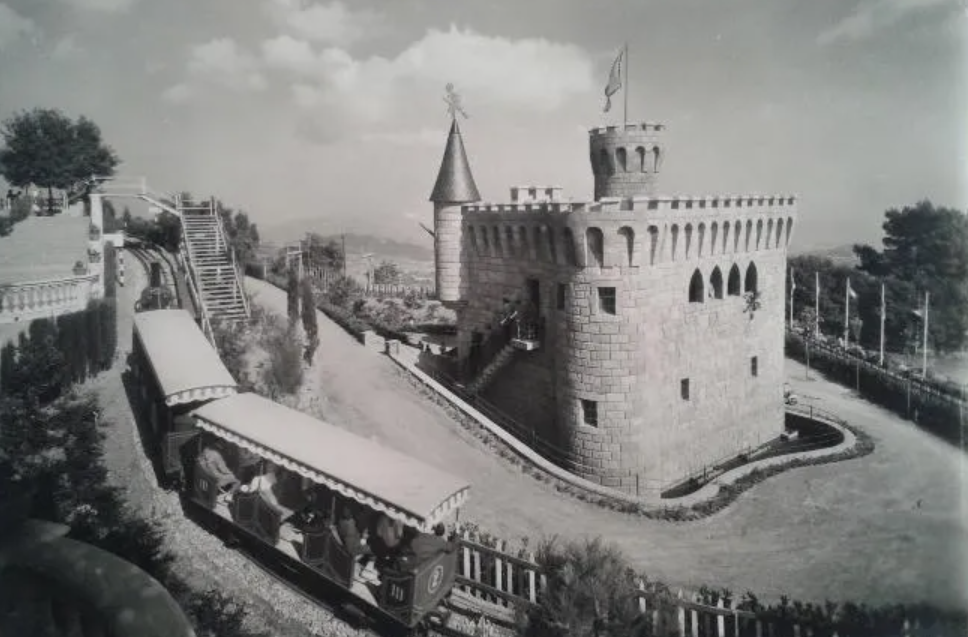
Source: https://www.todocoleccion.net/postales-cataluna/barcelona-tibidabo-castillo-encantado-ferrocarril~x70034401
Depending on the source, in 1954 or 1956 Walt Disney visited the park and was fascinated by the extraordinary collection of automatons on display in the park’s automaton museum. According to various sources consulted for the writing of this article, Walt Disney offered a blank check in exchange for the entire collection, but the offer was rejected by the park owners (Dr. Andreu’s family).

Source: https://www.guiadelocio.com/barcelona/ninos/barcelona/parque-de-atracciones-del-tibidabo
The first Tibidabo roller coaster was built in 1961, other new attractions such as a panoramic Ferris Wheel and a Bumper Car track were also built. In 1966 another large amusement park was inaugurated in Barcelona, on the Montjuïc mountain, at the opposite side of the city, next to the port. The new park featured newest technology rides and better accessibility, making it a strong competitor to Tibidabo. We will focus on Montjuïc’s park in the next article of the series. As the years went by Tibidabo lost a lot of visitors and, the effort made to modernize the park and the change of the management team members, was not enough. In 1986 the park was fenced off and from that moment it was required to buy a ticket to access the property. Two years later, in 1988, the economic situation of the park was very precarious, and the Dr. Andreu’s family, owners of the park since 1928, sold it to businessman Javier de la Rosa, who some years later would play a very important role in the construction of the first theme park in Spain: PortAventura.

Source: https://www.tibidabo.cat/es/giradabo
After purchasing the amusement park, Javier de la Rosa created the company Grand Tibidabo and, thanks to a capital increase through small shareholders, a major renovation of Tibidabo’s facilities could be done. During this period, many of the old attractions were removed and replaced by other new-generation attractions such as Diavolo (Wave Swinger), Piratta (Pirate Ship Ride) or Aladino (Ali Baba Pendulum Ride), the first two of them are still operating today. In 1990 Tibidabo Express (Powered Mine Train Roller Coaster) was built and a new haunted maze was inaugurated.
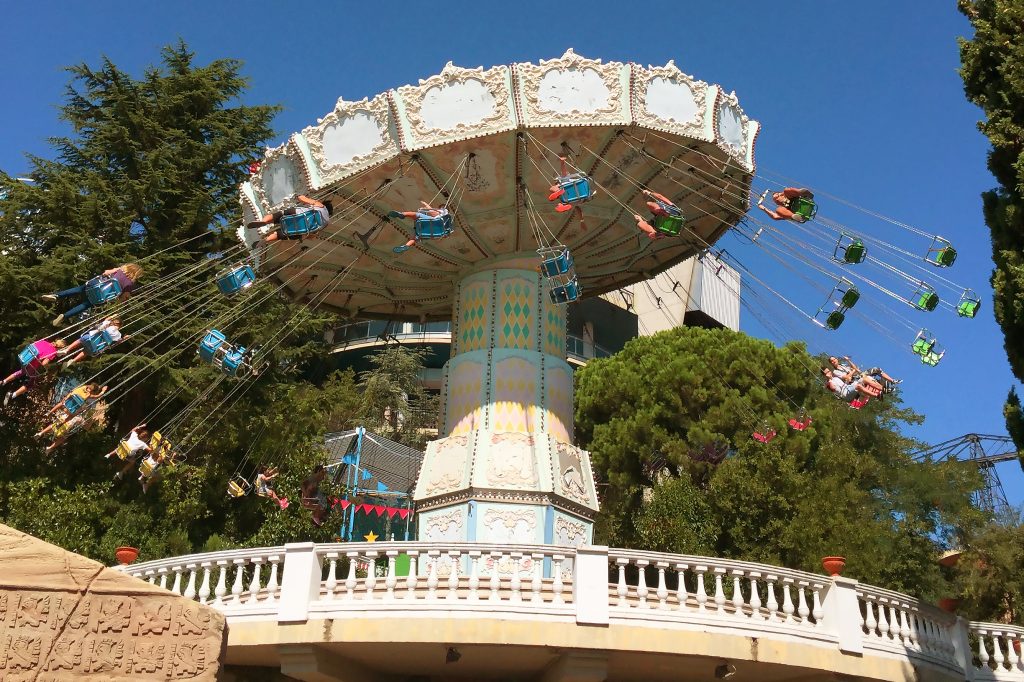
Source: European Coaster Kings
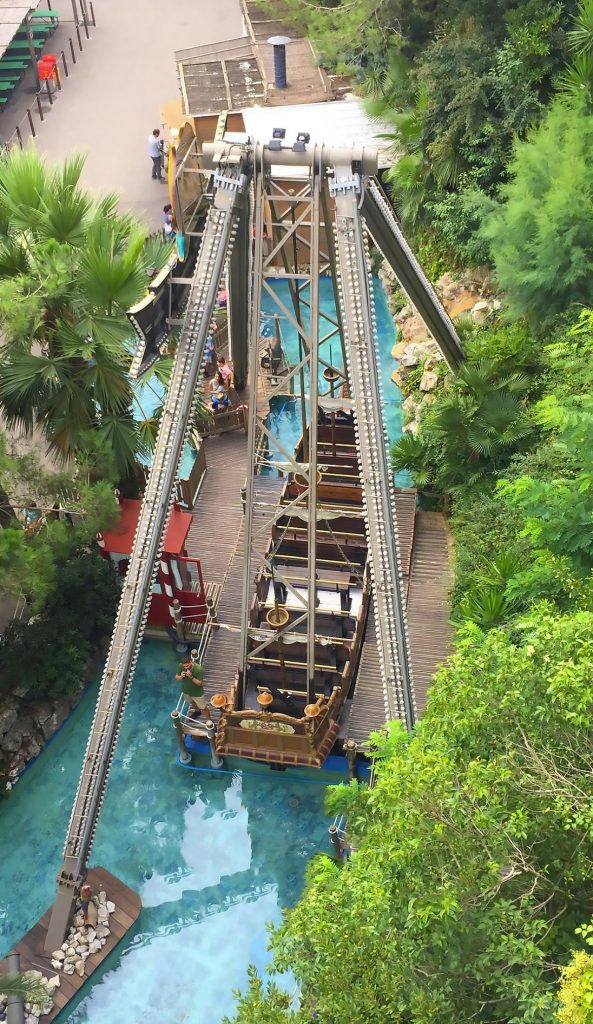
Source: European Coaster Kings
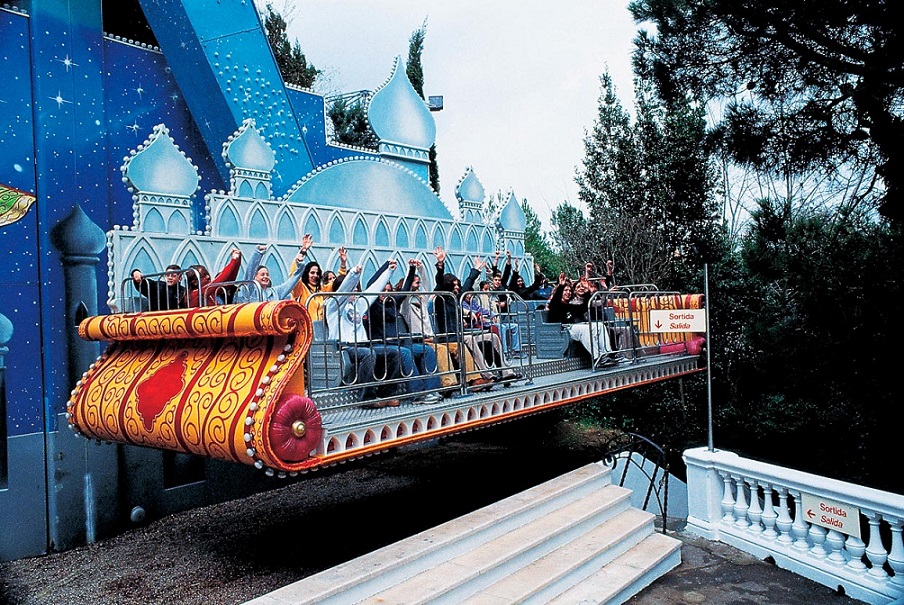
Source: https://www.tibidabo.cat/es/el-tibidabo/historia
In 1992 the Barcelona Olympics were celebrated and another emblematic attraction that is still operating today was inaugurated: Hurakan (Top Spin). Some suggest that this attraction was actually manufactured for PortAventura (1995), but this has not been verified. It makes sense, PortAventura was under construction in 1992 and the attraction is themed in the Mayan style, inspired by a historical Mexican civilization represented in the PortAventura’s Mexico area.
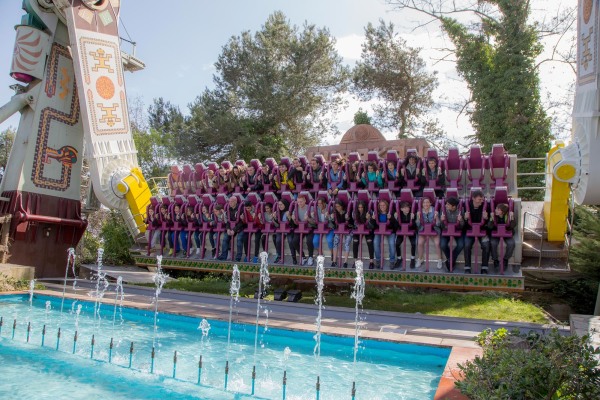
Source: https://www.pa-community.com/parques/tibidabo/atracciones/hurakan
After the opening of the first Spanish theme park (PortAventura) in 1995, Tibidabo built several new attractions in order to maintain the level of visitors. The Krüeger Hotel is a walk through attraction that replaced the previous haunted maze. This has become an emblematic attraction of the park since its inauguration in 1996. For horror lovers this attraction is one of the best thematic experiences in Europe. It is, without a doubt, a must when visiting Tibidabo. In fact, some of the actors and creators of this haunted maze are currently the promoters of the Horrorland scream park. In 1997 the park opened the Mina d’Or (Gold Mine) Log Flume Ride.
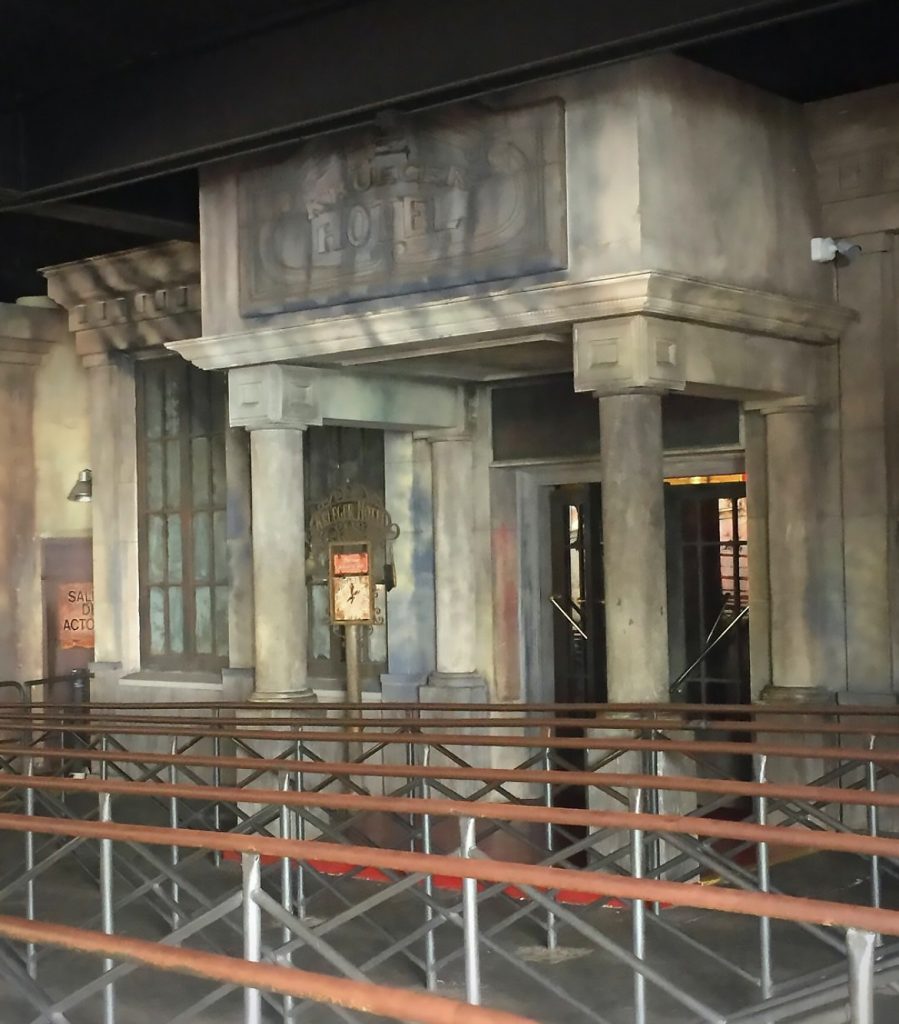
Source: European Coaster Kings
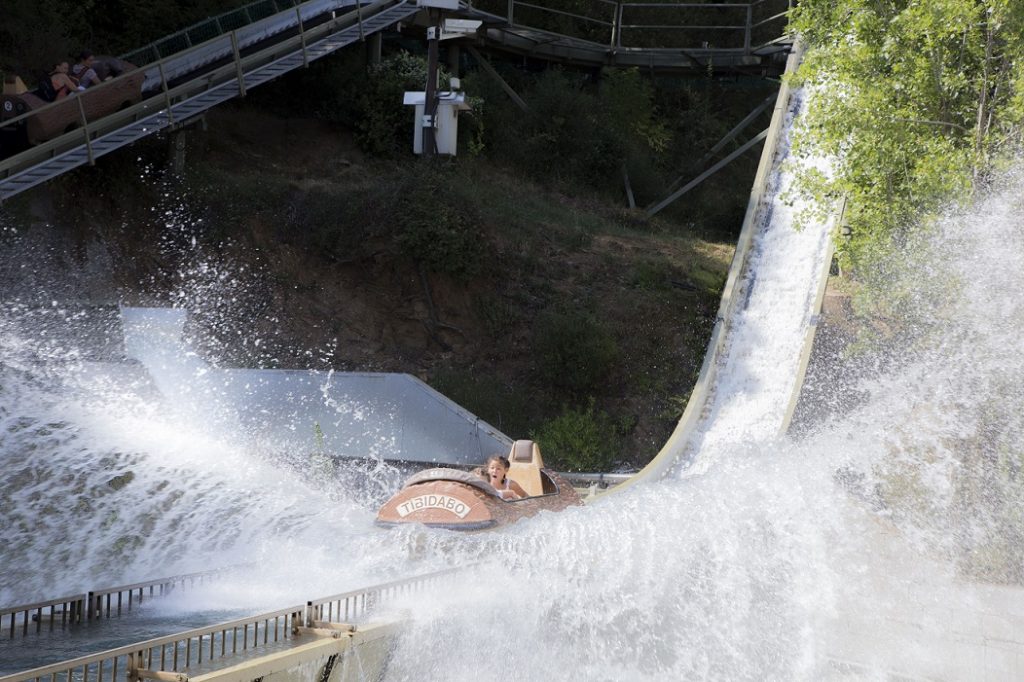
Source: https://www.tibidabo.cat/ca/en-el-parc/atraccions/mina-dor
In 1999 the main owner of the amusement park, Javier de la Rosa, was charged with decapitalization and tax fraud and, in 2002, he was sentenced to 5 and a half years in jail. During the judicial proceeding, the park was auctioned. In 2000 the Barcelona City Council bought the park and it became public property. In this new era of the park, an area called Camí del Cel (Sky Path) was inaugurated, which consists of small children’s attractions. In 2006 the extreme attraction PNDØL was inaugurated and the following year a 4D cinema named Dididado was added to the park. In 2008 the old roller coaster of the park was removed and a new one manufactured by Vekoma was built called Muntanya Russa (Roller Coaster).
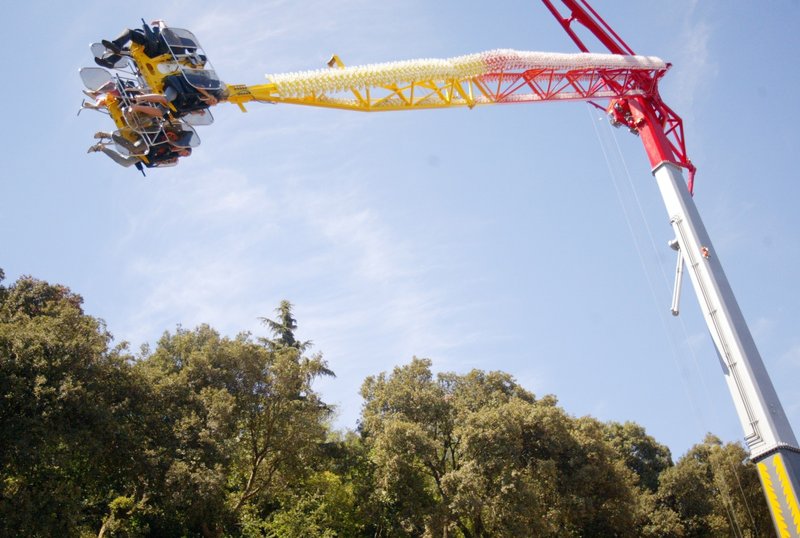
Source: http://www.elpuntavui.cat/societat/article/5-societat/198325-el-tibidabo-reconeix-que-el-pendol-ha-tingut-problemes-des-que-es-va-inaugurar.html
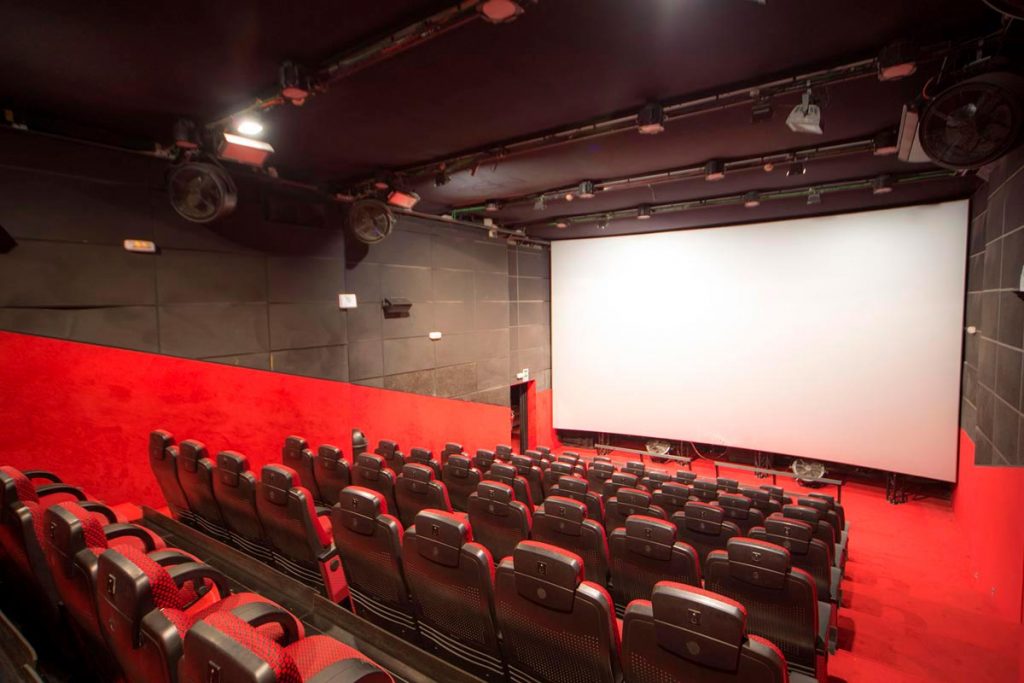
Source: https://www.tibidabo.cat/ca/en-el-parc/atraccions/dididado
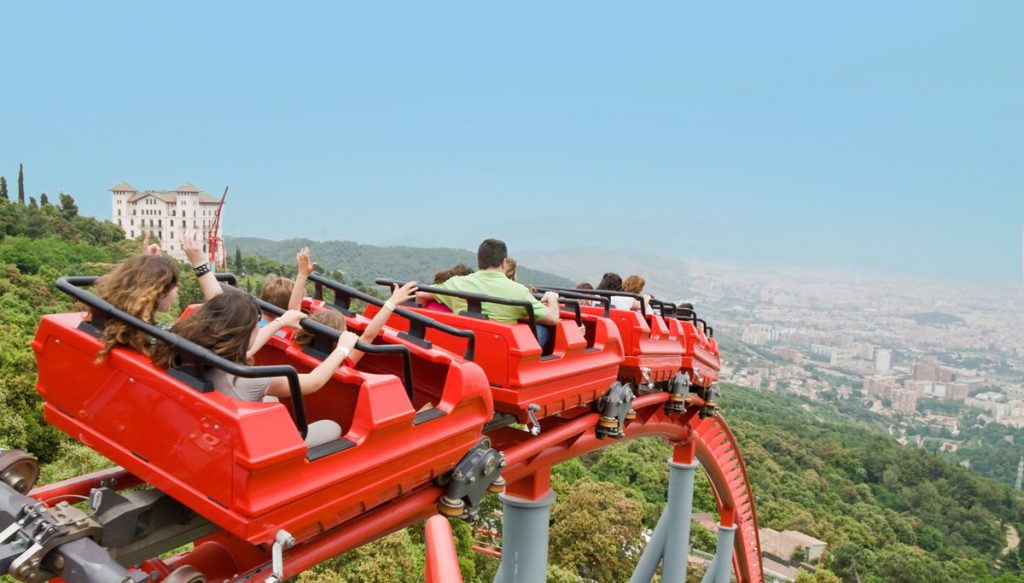
Source: https://www.pa-community.com/parques/tibidabo/atracciones/muntanya-russa
In 2010 there was a fatal accident at the attraction PNDØL, a 15-year-old girl died and other three people were seriously injured. After four years of operation, the attraction, which consisted of a 38-meter-high articulated pendulum arm that reached a speed of more than 100 km/h in a free fall, was removed. Due to this accident, other attractions in the park were exhaustively revised and some of them were completely refurbished, for example the Ferris Wheel. As a result of this accident, the park’s number of annual visitors decreased at the beginning of the 2010s.
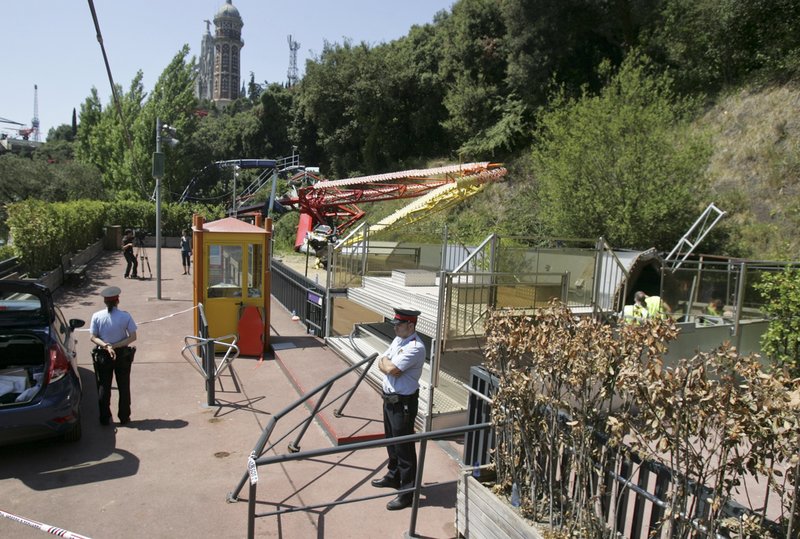
Source: http://www.elpuntavui.cat/societat/article/5-societat/196734-la-presidenta-del-parc-del-tibidabo-confirma-que-el-pendol-va-ser-revisat-hores-abans-de-laccident.html#&gid=1&pid=1
In recent years, Tibidabo has been recovering and increasing the number of annual visitors. Small new attractions have been added and some of the rest have been completely refurbished. The haunted castle has become the Castell dels Contes (Castle of Fairy Tales); Tibidabo Express has become the Virtual Express with virtual reality headsets, and now guests can enjoy an immersive experience starring some of Europa Park’s characters. The park recently updated the suspension railway and its dark ride scenes and has gradually improved access to the mountain has been improved. It is expected that in 2021 a new funicular will be inaugurated. In addition, the philosophy of the park has also evolved over the last few years from offering pure entertainment to also educating and promoting respect for the environment, nature, and diversity. If you ever visit Barcelona or PortAventura, it may be a good idea to plan a one-day visit to Tibidabo.
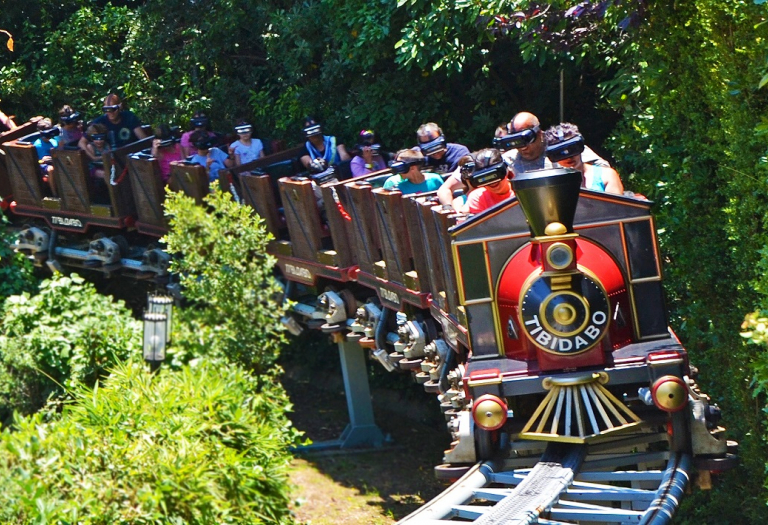
Source: https://www.tibidabo.cat/ca/en-el-parc/atraccions
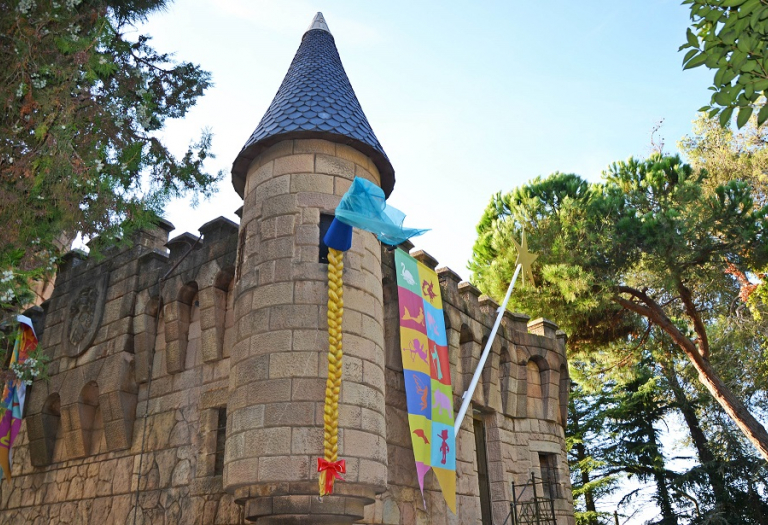
Source: https://www.tibidabo.cat/ca/en-el-parc/atraccions
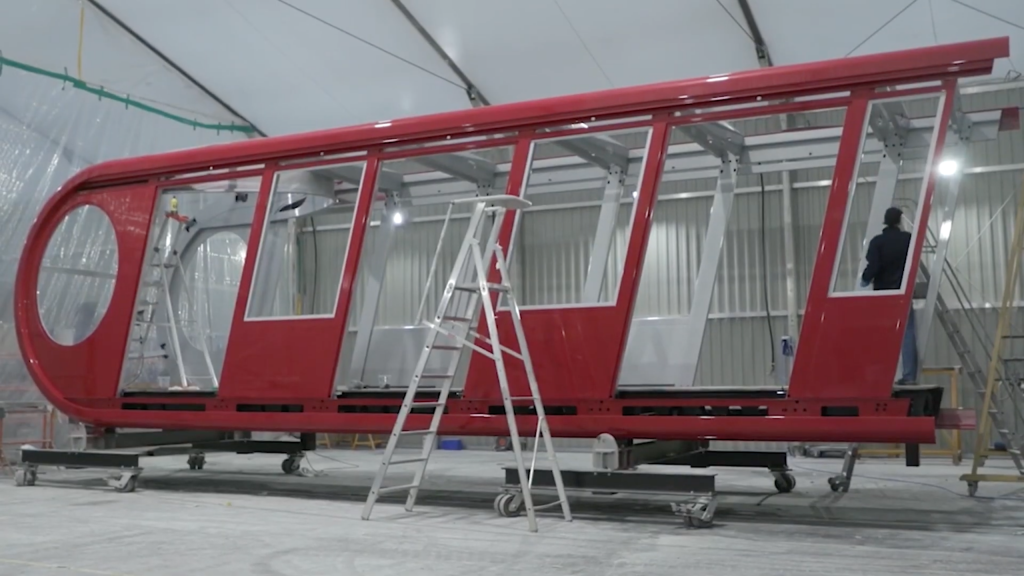
Source: https://www.youtube.com/watch?v=c1-QWj5O06E&ab_channel=ParcTibidabo
Sources used for this article:
Aviastar. Rohrbach Ro VIII Roland. http://www.aviastar.org/air/germany/rohrbach_roland.php
Brotons, R. (2011). Parcs d’Atraccions de Barcelona (2nd ed.). Albertí.
CincoDías. (2015, October). Tibidabo, el parque que enamoró a Walt Disney. https://cincodias.elpais.com/cincodias/2015/10/23/sentidos/1445634166_387292.html
El País. (2010, July). Accidente mortal en el Tibidabo. https://elpais.com/elpais/2010/07/17/actualidad/1279354626_850215.html
El Periodico. (2018, October). El funicular del Tibidabo doblará su capacidad y se convertirá en atracción. https://www.elperiodico.com/es/barcelona/20181027/funicular-tibidabo-renuieva-atraccion-7113952
Jiménez, R. (1995). Les desventures de PortAventura. Empúries.
La Vanguardia. (2018, January). El Parque de Atracciones Tibidabo bate su récord de asistencia en 2017. https://www.lavanguardia.com/politica/20180105/434076330127/el-parque-de-atracciones-tibidabo-bate-su-record-de-asistencia-en-2017.html
Salesianos Tibidabo. Historia Templo. https://tibidabo.salesianos.edu/historia/
Tibidabo. (2021). Historia Parque de Atracciones Tibidabo. Parc d’Atraccions Tibidabo. https://www.tibidabo.cat/es/el-tibidabo/historia?language=ca



